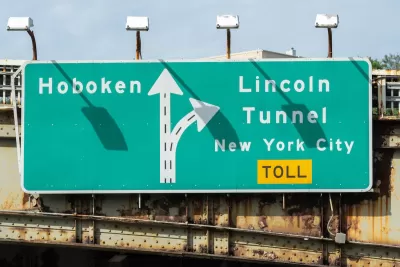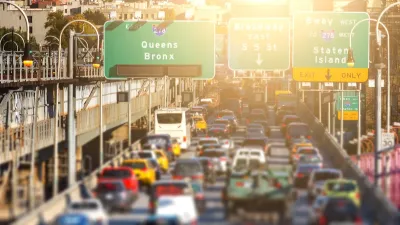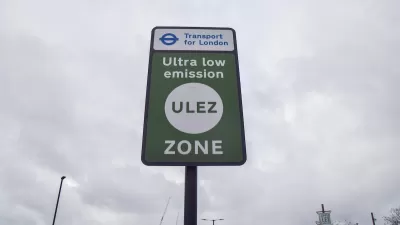The program has taken tens of thousands of vehicles off the city’s roads in its first week.

After a protracted battle to get the program passed, New York City’s congestion pricing program is already yielding positive results, according to a New York Times article by Ana Ley, Winnie Hu, and Keith Collins. Despite opposition from local leaders and residents, only 11 percent of people who work in the tolling zone drove there before congestion pricing began.
Data from the program’s first week reveals “tens of thousands fewer vehicles entering the busiest parts of Manhattan below 60th Street,” although subfreezing temperatures could also have contributed to the drop in traffic. “Yet the data released by the M.T.A. is the first hard evidence that the congestion pricing plan, the first of its kind in the nation, had a promising start toward its ambitious goal of reducing gridlock,” the authors note.
According to the article, vehicles traveling westbound on the Williamsburg Bridge traveled at a speed 45 percent faster than at the same time last year, and commuters say their daily trips are much shorter. Transit buses also experienced shorter trips, with some routes seeing trips four minutes shorter than before.
FULL STORY: Less Traffic, Faster Buses: Congestion Pricing’s First Week

Manufactured Crisis: Losing the Nation’s Largest Source of Unsubsidized Affordable Housing
Manufactured housing communities have long been an affordable housing option for millions of people living in the U.S., but that affordability is disappearing rapidly. How did we get here?

Americans May Be Stuck — But Why?
Americans are moving a lot less than they once did, and that is a problem. While Yoni Applebaum, in his highly-publicized article Stuck, gets the reasons badly wrong, it's still important to ask: why are we moving so much less than before?

Using Old Oil and Gas Wells for Green Energy Storage
Penn State researchers have found that repurposing abandoned oil and gas wells for geothermal-assisted compressed-air energy storage can boost efficiency, reduce environmental risks, and support clean energy and job transitions.

Updating LA’s Tree Rules Could Bring More Shade to Underserved Neighborhoods
A new USC study finds that relaxing Los Angeles’ outdated tree planting guidelines could significantly expand urban tree canopy and reduce shade disparities in lower-income neighborhoods, though infrastructure investments are also needed.

California's Canal Solar Projects Aim to Conserve Resources and Expand Clean Energy
California’s Project Nexus has begun generating electricity from solar panels installed over irrigation canals, with researchers and state agencies exploring statewide expansion to conserve water and boost clean energy production.

HHS Staff Cuts Gut Energy Assistance Program
The full staff of a federal program that distributes heating and cooling assistance for low-income families was laid off, jeopardizing the program’s operations.
Urban Design for Planners 1: Software Tools
This six-course series explores essential urban design concepts using open source software and equips planners with the tools they need to participate fully in the urban design process.
Planning for Universal Design
Learn the tools for implementing Universal Design in planning regulations.
Heyer Gruel & Associates PA
City of Moreno Valley
Institute for Housing and Urban Development Studies (IHS)
City of Grandview
Harvard GSD Executive Education
Salt Lake City
NYU Wagner Graduate School of Public Service
City of Cambridge, Maryland





























